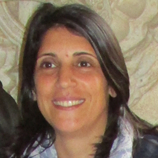Advanced Nanocellulose-Based Materials: Production, Properties and Applications II
A special issue of Nanomaterials (ISSN 2079-4991). This special issue belongs to the section "Nanocomposite Materials".
Deadline for manuscript submissions: closed (10 July 2023) | Viewed by 2560
Special Issue Editors
Interests: sustainable use of biopolymers (nanocellulose, chitosan, pullulan, proteins, etc.) for the design of functional nanostructured materials for biomedical (e.g., drug delivery and wound healing) and technological (e.g., active packaging, fuel cells, and water remediation) applications
Special Issues, Collections and Topics in MDPI journals
Interests: production and application of biogenic nanofibers (bacterial cellulose and protein fibrils); nanostructured biocomposites; bio-based materials for biomedical applications (wound healing, drug delivery and 3D-bioprinting); biocomposites and functional paper materials; chemical modification of (nano)cellulose fibers and other polysaccharides and their characterization and applications; chemistry of lignocellulosic materials (cellulose, wood, cork, etc.)
Special Issues, Collections and Topics in MDPI journals
Special Issue Information
Dear Colleagues,
Cellulose nanocrystals (CNCs), cellulose nanofibers (CNFs) and bacterial nanocellulose (BNC) are three nanometric forms of cellulose, the most abundant natural polymer, and are presently in the spotlight in manifold domains of modern science and technology. The environmentally friendly connotations, peculiar characteristics and multiple functionalities of these nanoscale cellulosic substrates are being explored to engineer advanced nanocomposites and nanohybrid materials for application in diverse fields, such as mechanics, optics, electronics, energy, environment, biology, and medicine.
Following the enormous success of the first Special Issue, titled “Advanced Nanocellulose-Based Materials: Production, Properties, and Applications”, the aim of the present Special Issue, “Advanced Nanocellulose-Based Materials: Production, Properties, and Applications II”, is to pursue the bringing together of a collection of original research and review papers from scientists working with nanocellulose. Therefore, research that is illustrative of recent developments in dealing with the production methodologies, properties and applications of nanocellulose-based materials, such as nanocomposites, hybrids, hydrogels, films and fibers, is welcomed to this Special Issue.
Dr. Carla Vilela
Prof. Dr. Carmen S. R. Freire
Guest Editors
Manuscript Submission Information
Manuscripts should be submitted online at www.mdpi.com by registering and logging in to this website. Once you are registered, click here to go to the submission form. Manuscripts can be submitted until the deadline. All submissions that pass pre-check are peer-reviewed. Accepted papers will be published continuously in the journal (as soon as accepted) and will be listed together on the special issue website. Research articles, review articles as well as short communications are invited. For planned papers, a title and short abstract (about 100 words) can be sent to the Editorial Office for announcement on this website.
Submitted manuscripts should not have been published previously, nor be under consideration for publication elsewhere (except conference proceedings papers). All manuscripts are thoroughly refereed through a single-blind peer-review process. A guide for authors and other relevant information for submission of manuscripts is available on the Instructions for Authors page. Nanomaterials is an international peer-reviewed open access semimonthly journal published by MDPI.
Please visit the Instructions for Authors page before submitting a manuscript. The Article Processing Charge (APC) for publication in this open access journal is 2900 CHF (Swiss Francs). Submitted papers should be well formatted and use good English. Authors may use MDPI's English editing service prior to publication or during author revisions.
Keywords
- cellulose nanocrystals
- cellulose nanofibers
- bacterial nanocellulose
- nanocomposites
- hybrids
- hydrogels
- films
- fibers
- biomedical applications
- technological applications







